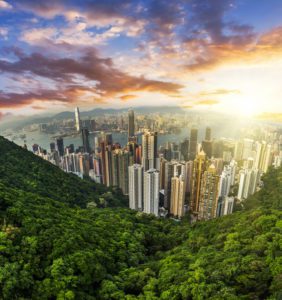The world celebrates more than 125 environmental dates to observe and raise awareness about sustainability and biodiversity. From World Environment Day to International E Waste day to Zero Emissions Day and Car free day, and country specific dates like Japan Dolphin Day and National Cleanup Day, these events are honoured to inspire action and conscious steps towards protecting the environment.
 Our progress for industrialisation, urbanisation is posing a huge challenge. We must take progressive actions beyond simply declaring a specific date for awareness-building to meet our sustainability goals for this world. The Paris Agreement’s long-term temperature goal is to keep the rise in global average temperature below 2 °C (3.6 °F) above pre-industrial levels, and to pursue efforts to limit the increase to 1.5 °C (2.7 °F), recognising that this would substantially reduce the impacts of climate change. One of the key drivers for achieving this goal would be to solve what we call the energy equation through energy efficiency.
Our progress for industrialisation, urbanisation is posing a huge challenge. We must take progressive actions beyond simply declaring a specific date for awareness-building to meet our sustainability goals for this world. The Paris Agreement’s long-term temperature goal is to keep the rise in global average temperature below 2 °C (3.6 °F) above pre-industrial levels, and to pursue efforts to limit the increase to 1.5 °C (2.7 °F), recognising that this would substantially reduce the impacts of climate change. One of the key drivers for achieving this goal would be to solve what we call the energy equation through energy efficiency.
India’s electricity consumption accounts for about 4% of the world’s total electricity consumption and it is growing at 8% to 10% a year. India is currently the fourth largest global energy consumer behind China, the United States, and the European Union.
Accelerated by an increased need to arrest carbon emissions across the globe, there is a call for change in how we, in India, power our industries and buildings, and overcome the challenges to make energy production and consumption more efficient. We need to develop and deploy bold, actionable roadmaps and solutions that will allow us to lower energy-related emissions while still meeting our energy demands.
The ‘New India’ of the future must imbibe a new electricity mandate with mature levels of Standard adherence in Buildings.
The effective embracing and implementation of Electricity 4.0 by industries and buildings can set us on a path to a complete transformation of our energy infrastructure, making it more efficient and sustainable.
Buildings account for almost a third of the world’s CO2 emissions by source, a number that rises to almost 40% when factoring in construction. In the developing world, residential homes are shortly set to become the largest single source of greenhouse gas emissions, according to a report published in PNAS.
One way to address this increased consumption is to ensure that there is faster adoption of standards for new buildings. We can achieve this by adopting Building standards and adhering to regulations. In Europe, the Energy Performance of Buildings Directive (EPBD) requires all new buildings from 2021 to be nearly net zero-energy (NZEB). In India, we have Energy Conservation Building Codes 2017(ECBC), which provides minimum requirement for energy efficiency design and construction of buildings. While we focus on new buildings code for making them more energy efficient, what happens to those buildings that were constructed before one or more decades? As such, we may not be able to bring any major structural changes in old buildings. However, we can certainly look at critical facilities in the buildings for energy audits and bring in more energy efficient technology in electrical distribution system as well as other building management facilities.
Digital Solutions for the new electric world
At Schneider Electric, we see electrification and digitisation as inseparable and critical paths to achieving sustainability.
Digital technologies, data and AI can help us turbocharge this sustainability transformation. The faster and more holistic we are in our action, the better. Sustainability will be the clear winner only when all IoT-connected smart technologies in a building starting from DG sets, aircon, lighting to smart plugs—will be managed by cutting-edge digital solutions controlled by software. Analytics for energy profiling of each of the facilities within buildings will provide actionable inputs for better management of energy consumption. This is even more important when we think about large technology parks with multiple buildings and multi-tenant facilities. These technology parks can also attain superior levels of energy efficiency with their ability to power their own requirement through renewable energy sources through microgrids.
Empowering tomorrow
The long relied upon source of energy has always been fossil fuels, particularly coal, which during the 2018-19 fiscal year produced about three-quarters of the country’s electricity. Electricity is the most efficient form of energy when we look at different sources like fossil fuels and other available sources. So be prepared for a world, which will be much more electric. But it is not going to be the same electricity. It is going be an electricity that will be generated from renewable sources, all over the world. Electric creates a future, which is much better than the one we have today, and that future will be green. Think about solar energy, microgrids, net-zero buildings and electric vehicles.
Together, we are partnering with our customers for a new electric world of innovation and digitisation, and create a sustainable and greener energy landscape for us to meet the evolving challenges of the world. Our solutions for All Electric and All Digital world will help our customer deliver on their sustainability goals through energy efficiency. And not surprisingly that the EcoStruxure™, our open IoT platform, leverages digitisation with connected products, Edge control, software and analytics to optimise energy and resources used in buildings, data centres, industry as well as power grids.
At Schneider Electric, our mission is to be our customers’ digital partner for Sustainability and Efficiency.



